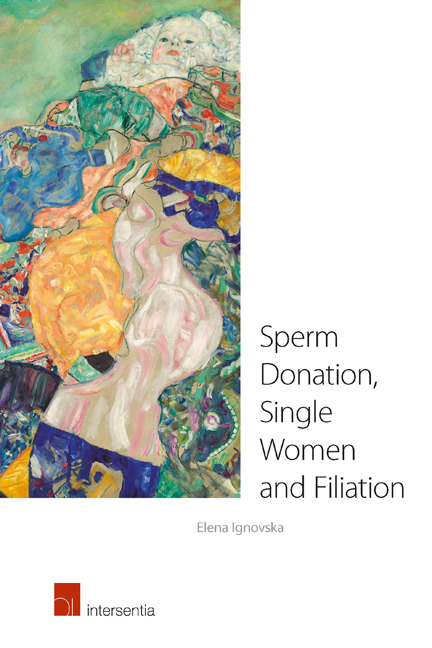Book contents
- Frontmatter
- Dedication
- Foreword
- Contents
- List of Abbreviations
- Introduction
- PART I MAPPING THE TERRAIN FROM AN INTERDISCIPLINARY AND INTERNATIONAL PERSPECTIVE
- Chapter 1 Terminology
- Chapter 2 International Regulations
- Chapter 3 Overview of the National Regulations in Ten European Countries
- PART II THE LEGAL, ETHICAL AND SOCIOLOGICAL POSITIONS OF THE PARTICIPANTS
- PART III LEGAL WAYS OF ESTABLISHING FATHERHOOD
- References
Chapter 1 - Terminology
from PART I - MAPPING THE TERRAIN FROM AN INTERDISCIPLINARY AND INTERNATIONAL PERSPECTIVE
Published online by Cambridge University Press: 12 December 2017
- Frontmatter
- Dedication
- Foreword
- Contents
- List of Abbreviations
- Introduction
- PART I MAPPING THE TERRAIN FROM AN INTERDISCIPLINARY AND INTERNATIONAL PERSPECTIVE
- Chapter 1 Terminology
- Chapter 2 International Regulations
- Chapter 3 Overview of the National Regulations in Ten European Countries
- PART II THE LEGAL, ETHICAL AND SOCIOLOGICAL POSITIONS OF THE PARTICIPANTS
- PART III LEGAL WAYS OF ESTABLISHING FATHERHOOD
- References
Summary
For the purposes of discussing the law and ethics of reproduction in the era of medically assisted technologies, it is important to differentiate between the use and interpretation of the terminology in the literature depending on the historical and professional context. It is important for interdisciplinary research to induct harmonised terminology, which will be used in a consistent manner at least for the purposes of the work itself. The ethical and legal debates related to sensitive issues such as life, personal identity, reproduction and family are too abstract for the needs of exact scientific conclusion. Bearing in mind that they cannot be calculated with mathematical formulas, it is useful from the beginning to elaborate some of the different interpretations of the ambiguous terms depending on their context of interpretation. Along these lines, it is important to make a distinction between (1) reproduction, procreation, insemination, fertilisation and conception; (2) wish, desire and need to have a child; (3) rearing, bearing and begetting a child; (4) progenitors/begetters, donors and parents (genetic, biological, social and legal); (5) kinship and family; and (6) “artificial insemination” and sperm donation as Assisted Reproductive Technologies (ART).
The introduction and interpretation of the terminology will be a basic tool for the further discussion. The legal context will be mapped from an international perspective, narrowing it down to the European context and the interpretation of international documents such as the European Convention on Human Rights by the European Court of Human Rights. For purposes of comparative overview, the lenses of observation will also look at the national regulations in ten European countries regarding three topics: (1) the right of single women to use ART; (2) the right of the child to know the identity of the donor; and (3) the legal proceedings for establishing fatherhood in relation to children conceived with ART.
REPRODUCTION, PROCREATION, INSEMINATION, FERTILISATION AND CONCEPTION
An important change that announced the new era of human cooperation with medical science in the field of what before was considered the exclusivity of nature was introduced when the term “procreation” was replaced with the manufacturing word “reproduction”.
- Type
- Chapter
- Information
- Sperm Donation, Single Women and Filiation , pp. 11 - 32Publisher: IntersentiaPrint publication year: 2015

